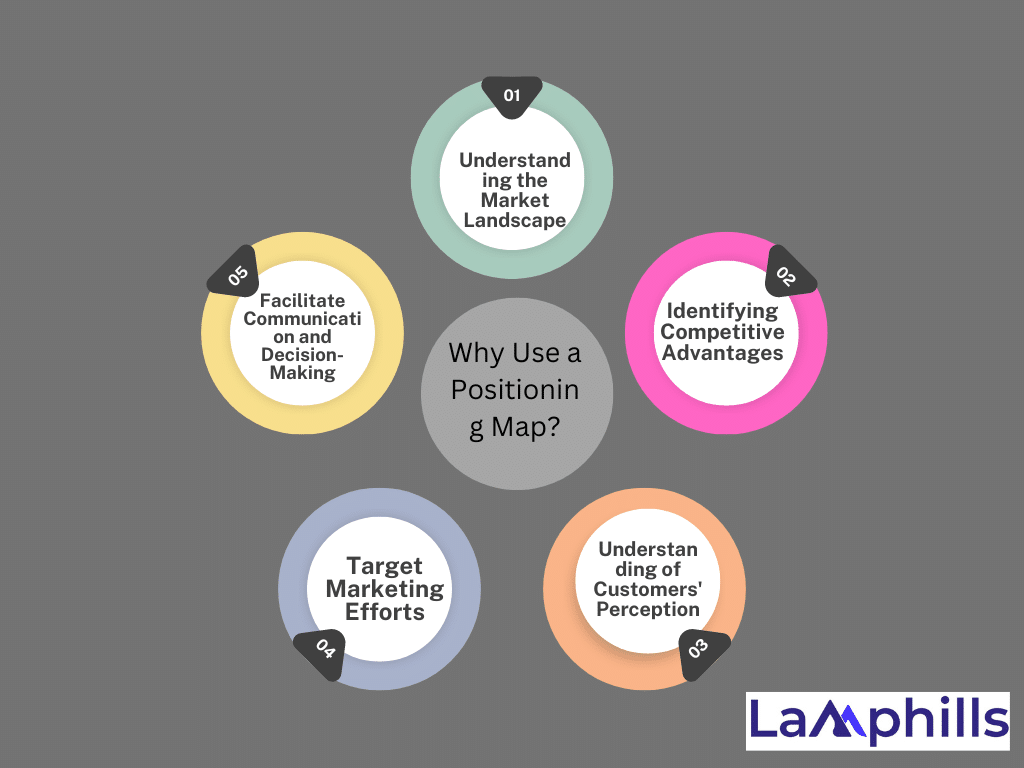As someone continuously looking for ways to generate a little more cash, I discovered that my managerial duties at my company gave me more time for myself. This is because we hired a few more people and had a lot more interns. So I took advantage of the chance by starting a small clothing business, just like you reading this post and many others out there could have done.
When I started my first business, I was filled with excitement and optimism about the possibilities of my product. I realized I had something special: organic ingredients, sustainable production, and an original design. But after a few months, reality struck me hard. What happened ? Sales were slow, and I struggled to get the right customers.
Fully aware that I was competing with larger businesses and needed to find a method to stand apart. What did go wrong? After a few analyses, the problem became obvious when I met a business coach who suggested drafting a positioning map. Guess what? It proved to be the key to realizing the full potential of my firm. After that, I was able to determine where my company fit in the market and where there was the possibility for growth after producing a positioning map. I must confess this tool served as my compass, guiding me through the competitive environment.
As a result, in this article, I’ll share my experience with positioning maps, explain why they’re important for business success, and walk you through the process of making your own, exactly like my mentor instructed.
Key Takeaways
- A positioning map is a visual tool that helps businesses understand where they stand relative to competitors, using two axes that represent key attributes like price, quality, innovation, or customer service.
- A positioning map includes data points representing competitors and identifies market segments to visualize gaps or opportunities.
- By using this tool, businesses can make informed strategic decisions to better position themselves in the market.
What is a Positioning Map?

A positioning map, also known as a perceptual map, is a visual representation of where various brands, products, or enterprises stand in the competitive market. The map often has two axes, each reflecting a key attribute such as price, quality, innovation, or customer service.
In other words, Positioning maps allow organizations to quickly see where they stand with competitors and identify market gaps. According to Harvard Business Review research, companies that use positioning maps in their strategy planning are 30% more likely to attain market leadership within five years. Can you beat that?
Key Components of a Positioning Map
- Axes: These represent the key attributes by which products or brands are compared. In my case, I chose “sustainability” and “design” as the axes for my clothing business.
- Data Points: These represent competitors in the market. Each point is plotted based on its relative position on the axes.
- Market Segments: These are areas within the map that indicate different segments of the market, helping to identify gaps or opportunities.
Examples of An Effective Positioning Map
A positioning map includes features that are vital for your target audience. However, to perform mapping correctly, I recommend generating numerous versions of your map based on distinct sets of attributes, which you can get directly from the values that your consumers cherish. This is because the perception of your product or service is closely related to those values, and brands that prioritize shared values win in the end.
As Harvard Business Review explains, “Build brand loyalty based on shared values with your customers. That is to say, that it is not the quantity of interactions a consumer has with your brand that matters, but the quality and relevance of those interactions.” In other words, if you position your brand and competition on your map, you’ll get a sense of who’s more competitive in a certain area over the rest. There are plenty of companies that have excelled at brand positioning over the years by building a positioning strategy that outshines the rest. Here are my favorite examples.
#1. Target vs. Walmart
This long-standing competition is a textbook example of a brand positioning strategy in action. For other customers, geography may be a barrier to experiencing the Target brand because there are considerably more Walmart outlets countrywide. However, these two retail chains are gaining a substantial piece of the market.
Target vs. Walmart: Positioning Strategy
Why I love Walmart’s positioning strategy. Walmart became the industry standard for fast and low-cost shopping for everything from groceries to auto parts. The mega-retailer focuses less on quality and customer service positioning, which Target has followed.
Why I like Target’s positioning plan. Sure, I could argue, “Both stores sell the same items; what’s the difference?” I believe Target fans would disagree, pointing to Walmart’s supposedly lengthier lineups and less organized aisle shelves as reasons for a less-than-stellar shopping experience. However, Walmart customers think that the low costs and convenience of having a store just a few blocks away make it worthwhile.
#2. Cash App vs. Venmo
Cash App and Venmo have become cultural institutions in their own way. When getting paid back used to rely on the phrase “I’ll pay you back later,” both applications now ensure that everyone fulfills their word by allowing users to request the amounts due. I use both apps, but I know some of my friends have specific preferences.
Cash App vs. Venmo: Positioning Strategy
Why I like the Cash App’s positioning strategy: The Cash App focuses on getting money from A to B as rapidly as feasible. Its convenience-focused marketing strategy is clear from the app’s home screen, where you may conduct a transaction.
Why I Like Venmo’s Positioning Strategy.: Venmo puts the transactional aspect of sending and receiving money on the back burner and centering connections with friends. Instead of the transactional screen, the landing page is a log of your friend’s recent transactions.
#3. Google Meet vs. Zoom Positioning Strategy
Why I Like Zoom’s Positioning Strategy: Zoom became the media’s go-to answer for work-from-home meetings. It grew in popularity and maintained its status as a convenient saving grace for solitary professionals.
Why I like Google’s positioning strategy. Google Meet’s positioning approach was carefully centered on identifying itself as a connect-from-home alternative for family and friends who couldn’t meet in person, while also providing professional solutions.
#4. Starbucks vs. Dunkin
While Starbucks and Dunkin’ Donuts appear to be very different, they both cater to customers who go for a coffee run every morning. While Starbucks’ branding is centered on the in-store experience, Dunkin’ Donuts’ branding concentrates on its two main offerings: coffee and donuts. Its slogan, “American Runs on Dunkin’,” underlines the breadth of its product offerings. Starbucks, on the other hand, emphasizes craft and provides a more typical coffee shop experience.
Starbucks’ vs. Dunkin’s Positioning Strategy
Why I like Starbucks’ positioning strategy: Starbucks’ green and brown branding contrasts sharply with Dunkin’s vibrant pink and orange.
Starbucks’ strategy focuses on quality above quantity and availability, as evidenced by their Coffee Finder page, which states, “Our coffee masters have distilled their years of tasting knowledge down to three simple questions to help you find a Starbucks coffee you’re sure to love.” This language reflects Starbucks’ emphasis on quality rather than quantity and even availability.
Why I like Dunkin’s positioning strategy: I believe Dunkin’ Donuts does an excellent job developing a positioning strategy focusing on both its industry leadership and broad availability, as well as its convenience, which we all seek as consumers.
“Dunkin’, founded in 1950, is the largest coffee and donuts brand in the United States, with more than 13,200 restaurants in nearly 40 global markets,” it states, highlighting how convenient it is to simply stop by for a coffee fix.
#5. Spotify vs. Apple Music
The Spotify vs. Apple Music issue has received an inordinate amount of attention; I just searched for it on Google and found 517 million results. Spotify is known for its extensive customization, whereas Apple Music is known for a more premium song selection and, of course, the high-quality Apple brand. Though their offers are startlingly similar, both brands adopt very different market positioning techniques.
Spotify vs. Apple Music: Positioning Strategy
What I like about Spotify’s positioning strategy. Spotify’s main point of differentiation is its price-based strategy. Its premium alternatives are essentially equivalent to Apple Music’s in terms of pricing, but it also has a free plan, making it more accessible.
Why I Like Apple Music’s Positioning Strategy: Given the similar pricing tiers, Apple Music aims to position itself as the better option with a quality-based approach, touting its 100-million song catalog and sound quality as principal attractors.
Why Use a Positioning Map?

Using positioning provides several benefits for businesses. Here’s why I found it so valuable especially as a newbie in the business sector then:
#1. Understanding the Market Landscape
Before I created a positioning map, I was operating in the dark. I had a basic sense of who my competitors were, but I wasn’t sure where I fit into the bigger market. Later on, the map provided a clear visual picture, allowing me to understand which competitors were my most serious threats and where I could carve out my territory. In other words, using a positioning map can be useful for a variety of reasons including visual clarity. You can also evaluate how you fit into the market and where there is room for expansion.
#2. Identifying Competitive Advantages
One of the greatest benefits of having a positioning map is the ability to identify competitive edges. When I mapped my competitors on a map, I observed that many of them favored trendy designs but lacked sustainability. Now with this information at hand, it enabled me to promote sustainability in my marketing activities, distinguishing my brand. Also, placement maps can assist you in better comprehending the competitive landscape.
#3. Clearer Understanding of Customers’ Perception
A positioning map assists you in understanding your clients’ perceptions. By charting data based on consumer feedback, you can decide which traits are most important to them. According to a Nielsen survey, 70% of consumers prioritize price and quality when making purchasing decisions. This information can help you with your marketing and product development activities.
#4. Target Marketing Efforts
Understanding where your brand fits in the market can help you create better-targeted marketing strategies that include effective messages and approaches for reaching your target demographic. For example, if your target audience is searching for a healthier alternative to energy drinks, you can make tailored product recommendations based on their interests.
#5. Facilitate Communication and Decision-Making
Product positioning maps, as a visual tool, are easily understood by a wide range of stakeholders; data analysts do not need to explain any of the information on the graph. Instead, positioning maps make it easier to communicate basic market insights and explore strategic options, allowing businesses to make better-informed decisions.
Steps to Build a Positioning Map
If you’re ready to create your positioning map, here are the steps I followed:
Step 1: Define the Market

Image by katemangostar on Freepik
Begin by identifying the relevant market. This includes understanding the industry, product category, and target audience. For my eco-friendly clothes firm, I concentrated on the sustainable fashion market and identified important competitors. Also, identify the relevant market and competitors. However, this requires an understanding of the industry, product category, and target audience.
#2. Draw a Positioning Map

Once you’ve decided where your brand fits in the market, it’s important to go into the specifics of what your brand represents to customers. A brand essence chart can help you organize these concepts so they’re clear and simple. You can also use this chart for copywriting and design inspiration.
The brand essence chart is made up of seven components:
- Attributes: Think of these as features. For a physical product, this might be a little easier to brainstorm than SaaS or a technology product.
- Benefits: What does the customer get to experience as a result of the attributes of your product or service?
- Personality: These adjectives describe the characteristics of your brand. Don’t be afraid to take out a thesaurus for this part, either. Personalities can and should be nuanced to distinguish your brand from the competition.
- Source of Authority and Support: What is the foundation of your brand? It might be a long-standing history of expertise in the industry, awards, and recognition by regulatory agencies in your vertical, scientific research, or even unwavering customer support in the form of reviews and testimonials.
- What It Says About You (The Customer): Based on the elements we’ve discussed thus far, what does your brand say about your ideal customer? Use inspiration from the personality section to help you complete this section.
- How It Makes You (The Customer) Feel: What are some words or phrases your ideal customer might use to describe how they feel when they interact with your brand? This section of the brand essence chart will help you find a niche angle for your brand messaging.
- Positioning/Brand Essence: Finally, you’ll tie all of these elements together to create a simple statement that describes what the customer should take away from your brand. This shouldn’t be confused with a formal positioning statement, you can find more on developing that here.
#3. Identify Your Competitors

Following a self-analysis, it is critical to conduct a competitive analysis. Why? To perform competition research, you must first determine who you are up against. This research will assist you in determining what aspects of your plan can be improved to get an advantage. There are various methods for determining your competitors, including:
- Conducting market research: I recommend asking your sales team what competitors come up during the sales process or doing a quick search using a market keyword and see which companies are listed.
- Use customer feedback: Ask your customers which businesses or products they were considering before choosing yours.
- Use social media: Quora offers a platform where consumers can ask questions about products and services. Search these forums to discover competitors in your niche. I’d also recommend looking on Reddit for Subreddits related to your business or niche to learn more about what your target audience might be looking for.
#4. Interpret Brand Positioning Chart to Determine a Positioning Gap

Image by pch.vector on Freepik
The positioning map you made may provide useful information. It offers you a comprehensive image of the competitive marketplace in which your company works, as well as assist you in determining your position within it. Your positioning map’s results enable you to see your brand in comparison to your competitors using a two-attribute matrix. The goal of the positioning map is to identify your company’s positioning gap.
#5. Select Relevant Attributes
Assume that the original version of your positioning map failed to reveal a suitable positioning gap or niche. In that instance, you could swap out one or both of the properties in your original placement map. To achieve the best results, select traits that your clients or prospects care about. The more relevant the attribute is to your clients, the greater your market share potential; yet, it may also be more competitive. A positioning map can help you locate a profitable niche that your company can dominate in the eyes of your clients.
To create your product positioning map, you must label your two axes with important advantages or essential qualities of your items. Pricing, quality, innovation, design, and customer service are some examples and so forth. All of these must be measurable, independent, and important to your target audience. For instance, if your market research discovered your target audience prefers to spend less on the types of products you sell, price should be one of your axes. For instance, I chose “sustainability” and “design” as my key attributes. Choose the attributes for your map’s axes. Consider attributes that are significant to customers and differentiate you from competitors.
Step 6: Collect the Data
Gather information about competition and customer attitudes. Customer surveys, competitive studies, and industry reports are all possible examples. For my firm, I conducted client surveys to learn about their attitudes toward sustainability and fashion trends. Gather information about competition and customer attitudes. Customer surveys, competition analyses, and publicly available data are all examples of this. The correctness of your data is critical for producing a reliable location map.
Furthermore, gathering information on competitors will be tough because they are reluctant to share their internal records. Fortunately, there are numerous ways to obtain information on competitors’ products and services, such as:
- Reading reviews on sites like G2, GetApp, Google Play, App Store, etc.
- Surveying their customers.
- Monitoring web traffic with tools like SimilarWeb.
- Reading press releases and industry reports.
- Setting up alerts for news related to your competitors.
- Collecting information on pricing, features, and other details from their websites.
Step 7: Plot the Data
Using software or manual plotting, create your positioning map, place data points representing your business and competitors based on the selected attributes. Then ensure the axes are clearly labeled to avoid confusion.
Step 8: Analyze the Map
Once you’ve developed your positioning map, examine it to uncover trends, market gaps, and chances for differentiation. This is when I had my “aha” moment, recognizing that my company could prosper by focusing on sustainability while still producing gorgeous items. This distinctive position made me stand out from the crowd. Once you’ve developed your positioning map, examine it to uncover trends, market gaps, and chances for differentiation. This study can help you plan your business strategy and make crucial decisions.
Now that you’ve plotted all of your data on a map, you can look at the product distribution and identify clusters, outliers, and market gaps. This information can assist you in determining your competitive advantage, areas for improvement, and prospective possibilities. For instance, if you find that all your competitor products have high sales prices, you know there might be a market for a similar product at a lower price point.
#9. Test Your Marketing Positioning
Once you’ve developed your positioning statement, you can test and play with it. It is beneficial to solicit input from your customers on whether your positioning statement meets its objectives. The best technique for testing your positioning statement is to conduct both qualitative and quantitative research, which can include surveys, polls, focus groups, and in-depth interviews. Based on the results of your tests, you may solidify your marketing positioning and change your marketing plans as needed.
#10. Monitor and Update
Periodically update your positioning map to keep track of changes in market trends, consumer preference, and your product’s performance. Consumer behaviors can alter the information on your map. In addition, as new competitors enter the market, you’ll need to know where they fit on your map to ensure your product can continue to stand out.
Using the Positioning Map for Business Strategy

A positioning map is not just a visual aid; it’s a strategic tool that can guide your business decisions. Here’s how I used it to refine my business strategy:
#1. Identifying Market Gaps
By examining the map, I discovered places with little to no competition. This understanding enabled me to focus my efforts on an underrepresented market group. After that, I customized my marketing and product development to match the needs of this niche, which resulted in greater sales and brand awareness. When I discovered my market gap, it was like finding a buried gem. It served as the foundation for my new marketing strategy, which proved to be quite successful.
#2. Informing Product Development
The positioning map can also aid in product development. Based on consumer feedback and competitor analysis, I recognized that to reach a larger audience, my product range needed to contain more brilliant colors and trendy designs. This change resulted in a substantial increase in sales.
The map might also help you focus your product development efforts. Understanding what your clients value most allows you to build goods that fit their demands. When I discovered that my competition lacked customer service, I spent in educating my team and used it as a selling point. This adjustment enabled me to stand out in a crowded market.
#3. Competitive Analysis
The map helps you keep an eye on your competitors, allowing you to anticipate their moves and adjust your strategy accordingly. I regularly updated my positioning map to ensure I was aware of any shifts in the market or emerging competitors.
#4. Repositioning and Strategy Adjustments
If you find yourself in a crowded space, use the map to identify opportunities for repositioning. This might involve changing your pricing strategy, targeting a different customer segment, or adding new features to your product. I did this by introducing eco-friendly packaging, which resonated with my environmentally conscious customers.
Common Positioning Map Mistakes and Pitfalls
Creating a positioning map can be valuable, but it’s important to avoid common pitfalls like:
#1. Subjective Bias
Avoid injecting personal bias into your analysis. Ensure your positioning map is based on objective data, not assumptions. In my early attempts, I had a biased view of my business’s strengths, thereby leading to misleading conclusions.
#2. Overcomplicating the Map
Keep your positioning map simple and easy to understand. Complex maps can lead to confusion and misinterpretation. I made this mistake initially by adding too many attributes, which complicated the analysis.
#3. Static Analysis
The market is dynamic, so it’s necessary to update your positioning map regularly. For me, once a trend, changes, and new competitors emerge I make it a point to update my map every quarter to stay ahead of industry shifts.
What is the difference between a perceptual map and a positioning map?
Perceptual mapping assesses client perception, whereas positioning maps compare the real characteristics of a company and its services. Furthermore, client perceptions could be correct or incorrect. Excellent marketing can readily impact it. However, positioning maps merely depict and compare reality.
What are the most typical positioning blunders that organizations make?
One of the most common branding and positioning mistakes is assuming you know what your customers want, need, and value without conducting any research or confirmation. This can result in a generic, ambiguous, or irrelevant message that fails to connect with your target audience or distinguish you from your competition.
What is a positioning matrix?
A positioning matrix is a matrix, a rectangle containing one horizontal and one vertical axis. These axes represent the two most important elements of differentiation in the market and are used to place brands or companies.
What are the four major positioning errors?
There are four main types of brand positioning errors; over-positioning, under-positioning, confused positioning, and double-positioning.
What does poor positioning mean?
Poor Positioning is not just simply not convincing people (persuasion) not being different than the competition (commoditization) or even not giving compelling reasons for people to buy from you (differentiation) Poor positioning is that you fall in the worst mental category.
Conclusion
By now, am certain you are convinced that positioning maps are a powerful tool for navigating the market and finding your unique position. But, by following the steps outlined in this guide and learning from my experiences, you can create a map that guides your business strategy and helps you identify new opportunities.
References
- determ.com
- uk.indeed.com
- blog.hubspot.com






